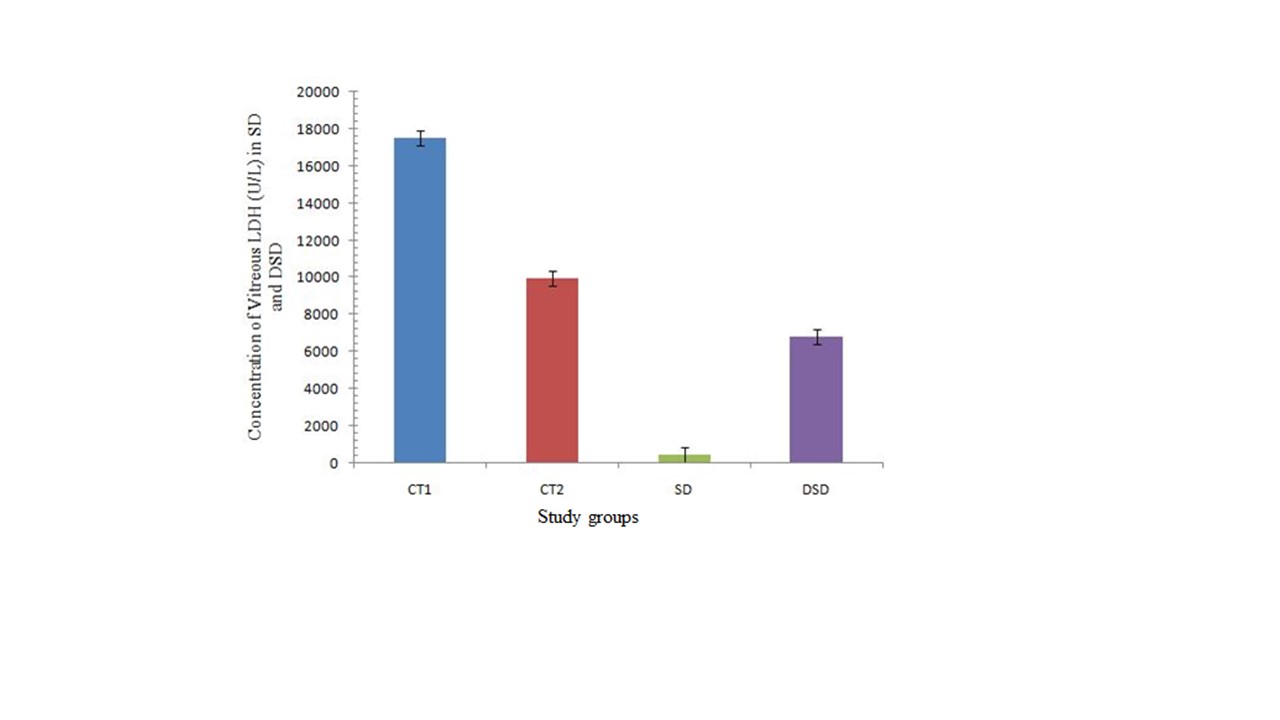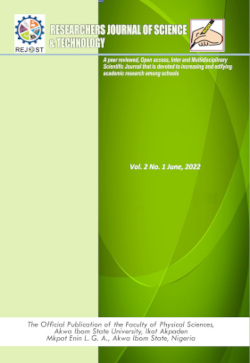Diagnostic Potentials of Postmortem Vitreous Biochemical Parameters in the Autopsy of Deaths Associated with Sniper Toxicity using Animal Models
Keywords:
Autopsy, Disguise, Discriminate, Sniper toxicity, CourtAbstract
Literature surveys revealed two major means by which perpetrators of murder crimes survive judicial scrutiny. One is by disguising the cause of death, which ultimately misleads the jury during judicial trials. The other is the fact that blood, the principal specimen for most medical investigations, putrefies shortly after death. This has created a diagnostic gap that is being exploited to mask homicide as the court finds it difficult to accurately ascertain the cause of death where there are no physical injuries, as in cases of chemical toxicities. This study aims at exploring the discriminatory potentials of selected vitreous biochemical parameters in the autopsy of death by sniper toxicity and in death disguised as sniper toxicity using rabbits. Completely randomized block design (CRBD) was used for this study. 96 male rabbits were used for this research and were structured into four groups of twenty-four rabbits each: two treatment (test) groups and two control groups. In one test group, the death of the experimental subjects was caused by sniper toxicity. In the second test group, the death of the experimental subjects was caused by strangulation; thereafter, the dead subjects were administered lethal doses of sniper as a cover-up of the actual cause of death. The remaining two groups are the baseline controls. After a postmortem interval of twenty-four hours, vitreous samples were obtained from each group of the experimental animals by Coe and Tente’s methods. The samples were analyzed for the levels of sodium, potassium, carbon dioxide, chloride, and calcium using the ion-selective electrode method, while total protein, albumin, globulin, glucose, total cholesterol, triacylglycerol, urea, creatinine, uric acid, creatine kinase, and lactate dehydrogenase were analyzed using their specific standard methods. Results obtained were then analyzed with the Statistical Package for Social Sciences (Version 18-21) and One-way Analysis of Variance (ANOVA) (Post Hoc-LSD). The results show that postmortem vitreous levels of urea, creatinine, uric acid, creatine kinase, and lactate dehydrogenase differed significantly (P ≤ 0.05) between samples from deaths caused by sniper toxicity and deaths by strangulation but disguised as sniper toxicity. The striking differences in the levels of these notable analytes can be utilized either as primary or confirmatory tests to reveal and discriminate between death disguised as sniper toxicity and death by actual sniper toxicity.
References
Adam, N. and Gail, C. (2013). Postmortem Toxicology, “In Clarke’s Analytical Forensic Toxicology”. 2nd edition, PhP Pharmaceutical press, 189-213
Agency for Toxic Substances and Disease Registry (ATSDR). (1997). Toxicological Profile for Dichlorvos. Public Health Service, U.S. Department of Health and Human Services, Atlanta, GA.
Agoro, E.S. (2018). Urine composition. Clinical importance of urinalysis. Semed productions Port Harcourt, 26 - 27.
Agoro, E.S., Chinyere, G.C. and Akubugwo, E. I. (2020). Emerging concept of vitreous concentrations of proteins and lipids as discriminant of fresh water drowning death. Journal of forensic and legal medicine, Vol. 73: 1019 - 1904.
Agoro, E. S., Ikimi, C. G. and Edidiong, T. (2021). The use of vitreous renal chemistries in the discrimination of postmortem fresh water drowning. Toxicology research and application, Vol. 5: 1-6.
Agoro, E. S., Wankasi, M. M. and Ombor, J. O. (2019). Biochemical patterns of cardio-renal biomarkers in serum and vitreous humour of rabbits after chronic CO exposure. Annals of environmental science and toxicology. Vol. 3(1): 001-006.
Amith, M. (2005). Role of vitreous humour biochemistry in forensic pathology. A thesis submitted to the University of Saskatchewan. (https://ecommons.usask.-ca/handle). Retrieved 17/02/2021.
Binukumar, B., and Gill, K. (2010). Cellular and molecular mechanisms of dichlorvos neurotoxicity: cholinergic, noncholinergic, cell signaling, gene expression and therapeutic aspect. Indian Journal of Experimental Biology Vol. 48: 697–709.
Bolarin, D.M. and Azinge, E.C. (2010). Chemical pathology laboratory tests in pregnancy. Journal of medical laboratory science; Vol. 19(1): 3-13.
Budavari, S. (1998). Merck index: an encyclopedia of chemicals, drugs and biologicals. Rahway NJ: Merck and Company Inc.
CERI: Chemicals Evaluation and Research Institute, Japan. (2007). Hazard Assessment Report; Dimethyl 2,2-dichlorovinyl phosphate. CERI, Japan.
Coe, J. I. (1993). Postmortem chemistry update. Emphasis on forensic application. American Journal of Forensic Medicine and Pathology, 14(2): 91–117.
D'Souza, D. H., Harish, S., Rajesh, M. and Kisan, J. (2011). Rigor mortis in an unusual position: Forensic Considerations International Journal of Applied Basic Medical Research Vol.1(2): 120-122.
Farhana, A. and Lappin, S. (2023). Biochemistry, lactate dehydrogenase. Stat Pearls, Treasure Island (FL). Retrieved from https://www.ncbi.nlm.nih.gov/books-/NBK557536. Accessed on 01/06/2023.
Garg, V., Oberoi, S.S., Gorea, R.K. and Kand Kiranjeet2004). Changes in the concentrations of vitreous potassium with increasing time since death. Journal of Indian Association of Forensic Medicine, Vol. 26: 136–139.
Gill, J.R. and Landi, K. (2011). Putrefactive rigor: apparent rigor mortis due to gas distension. American journal of forensic medical pathology Vol. 32: 242-244.
Gwon, A. (2008). The rabbit in cataract surgery. Tsonis, P.A. (ed.) Animal models in eye research. Elsevier, pp. 184-204.
Ikimi, C. G., Ezekwessili-Ofili, J. O. and Igwilo, I. O. (2023). Potentials of selected vitreous biochemical parameters as biomarkers in postmortem determination and discrimi-nation of death by hanging using animal models. International Journal of Basic Science and Technology. Vol. 9(4): 204 – 211.
Ikimi, C. G., Ezekwessili-Ofili, J.O. and Igwilo, I.O. (2024). Discriminatory potentials of vitreous electrolytes and renal indices in the autopsy of deaths suspected to disguise by hanging in rabbits. International Journal of Basic Science and Technology. Vol.10(1): 33 – 34
Imam, A., Sulaiman, N., Oyewole, A., Amin, A., Shittu, S., and Ajao, M. (2018). Pro-Neurogenic and Antioxidant Efficacy of Nigella sativa Oil reduced Vulnerability to Cholinesterase Dysfunction and Disruption in Amygdala Dependent Behaviors. CPF Exposure. JKIMSU Vol. 7: 1–12.
Michael, E., Nick, A., Peter, E., and Andrew, H. (2008). Management of acute organophosphorus pesticide poisoning. Lancet. 16; 371(9612): 597–6
Omelianchuk, A., Bernat, J., Caplan, A., Greer, D., Lazaridis, C., Lewis, A., Pope, T., Ross, L.F. and Magnus, D. (2022). Revise the uniform determination of death act to align the law with practice through neurorespiratory criteria. Neurology, Vol. 98 (13): 532 – 536.
Peters, T. (1996). All About Albumin: Biochemistry, Genetics and Medical Applications. San Diego, CA: Academic Press Limited.
Rosato, E., Bonelli, M., Locatelli, M., Grazia, U., Tartaglia, A., Savini, F. and D'Ovidio, C. (2021). Forensic biochemical markers to evaluate the agonal period: a literature review. Molecules, Vol. 26(11): 3259.
Ruchieka V., Hitesh, V. and Nirmala, N. (2014). Modified technique for soft tissue processing and staining, journal of histotechnology, Vol.37(1): 14-20.
Sacco, M.A., Cordasco, F., Scalise, C., Ricci, P. and Aquila, I. (2022). Systematic review on post-mortem protein alterations: analysis of experimental models and evaluation of potential biomarkers of time of death. Diagnostics, Vol. 12(6): 1490.
Sembulingam, K. and Sembulingam, P. (2010). Renal function tests. Essentials of medical physiology, 5th edition. Jaypee brothers medical publishers, New Delhi, India, 320-321.
Spriet, L.L., Howlett, R.A. and Heigenhauser, G.J. (2000). An enzymatic approach to lactate production in human skeletal muscle during exercise. Med sci. sports exerc. Vol. 32(4): 756-763.
Tente, W., O’Rourke, P., Sherman, S., Kauper, K., McGovern, C., Matteus, S., Dean, B., Toa, W. and Thanos, C. (2004). Sustained Delivery of hCNTF to Rabbit Vitreous Humour by Two Polymer Encapsulated Cell Lines in the NT-502 Device. Investigative Ophthamology and Visual Science Journal, Vol. 45 (13): 303 -329.
Thierauf, A., Kempf, J., Perdekamp, M.G., Auwärter, V, Gnann, H. (2011). Ethyl sulphate and ethyl glucuronide in vitreous humour as postmortem evidence marker for ethanol consumption prior to death. Forensic Science International, Vol. 210: 63-68.
USEPA: United States Environmental Protection Agency. (2007). Integrated Risk Information System (IRS) on Dichlorvos. Environmental criteria and assessment office, office of Health and Environmental Assessment, Office of Research and Development Cincinnati, OH.
Varo, I., Navarro, J., Amat, F., Guilhermino, L. (2003). Effects of dichlorvos on cholinesterase activity of the European sea bass (Dicentrarchus labrax). Pesticide Biochemistry and physiology 75: 61–72.
Vasudevan, D.M., Sreekumari, S. and Kannan, V. (2019). Acid-base balance and pH. Textbook of medical biochemistry. 9th ed. Jaypee brothers medical publishers ltd, New Delhi, India. 444-448.
Wankasi, M.M., Agoro, E.S. and Ikimi, C.G. (2020). Vitreous humour biochemical parameters as indicators for corrobarating acute sniper (dichlorros) induced death. Journal of forensic toxicology and pharmacology. Vol. 9(20): 168 - 190.
WHO (1992). International Programme on chemical safety. WHO recommended classification of pesticide by hazards and guidelines to classification 1994–1995. UNEP/ILO/WHO.
WHO (1999). Environmental Health Criteria 213, Carbon Monoxide, 2nd ed. World Health Organization, Geneva.
Zilg, B., Alkass, K., Berg, S. and Druid, H. (2009), Postmortem identification of hyperglycemia. Forensic Science International, Vol. 185: 89-95.
Zilg, B., Alkass, K., Kronstrand, R., Berg, S. and Druid, H. (2022). A rapid method for postmortem vitreous chemistry analysis-deadside analysis. Biomolecules 12(32): biom12010032.
Zwirner, J. Anders, S., Bohnert, S., Burkhardt, R., Broi, U.D., Hammer, N., Pohlers, D., Tse, R. and Ondruschka, B. (2021). Screening for fatal traumatic brain injuries in cerebrospinal fluid using blood-validated CK and CK-MB immunoassays. Biomolecules, Vol. 11:1061.

Downloads
Published
How to Cite
Issue
Section
License
Copyright (c) 2024 Researchers Journal of Science and Technology

This work is licensed under a Creative Commons Attribution-NonCommercial-NoDerivatives 4.0 International License.




